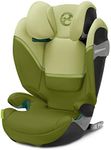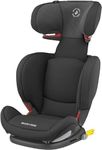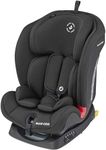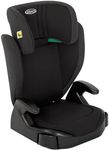Buying Guide for the Best Car Booster Seats
Choosing the right car booster seat for your child is crucial for their safety and comfort during car rides. Booster seats are designed to elevate your child so that the car's seat belt fits properly over their shoulder and lap, reducing the risk of injury in the event of a collision. When selecting a booster seat, consider your child's age, weight, and height, as well as the type of vehicle you have. It's important to ensure that the booster seat you choose meets safety standards and is easy to install and use. Here are some key specifications to consider when choosing a car booster seat.Weight and Height LimitsWeight and height limits indicate the range within which a booster seat can safely accommodate a child. This specification is crucial because it ensures that the seat will provide the necessary support and protection for your child. Booster seats typically have a minimum weight limit of around 40 pounds and can accommodate children up to 100 pounds or more. Height limits usually range from 38 to 57 inches. To choose the right booster seat, consider your child's current weight and height and select a seat that will accommodate their growth over time.
Type of Booster SeatThere are two main types of booster seats: high-back and backless. High-back booster seats provide head and neck support and are ideal for vehicles without headrests or with low seat backs. They are also beneficial for younger children who may need additional support. Backless booster seats are more portable and are suitable for vehicles with adequate headrests. When choosing between the two, consider your vehicle's seat design and your child's comfort needs.
Installation MethodThe installation method refers to how the booster seat is secured in the vehicle. Some booster seats use the car's seat belt to secure both the seat and the child, while others may have additional LATCH connectors for extra stability. It's important to choose a booster seat that is easy to install and fits well in your vehicle. Consider whether you will be moving the seat between different cars, as this may influence your preference for a simpler installation process.
Safety FeaturesSafety features in booster seats can include side-impact protection, energy-absorbing foam, and belt-positioning guides. These features are important because they enhance the seat's ability to protect your child in the event of a crash. When evaluating safety features, look for seats that have been tested and meet or exceed safety standards. Consider your child's specific needs, such as additional side protection for younger or smaller children.
Comfort and AdjustabilityComfort and adjustability are important for ensuring that your child is happy and secure during car rides. Features such as padded seats, adjustable headrests, and armrests can enhance comfort. Some booster seats also offer adjustable recline positions. When choosing a booster seat, consider how long your child will be sitting in the car and whether they may need to nap during trips. An adjustable seat can grow with your child and provide a better fit over time.
Ease of CleaningEase of cleaning is an important consideration, especially for young children who may spill food or drinks in the car. Many booster seats come with removable and machine-washable covers, which make cleaning much easier. When selecting a booster seat, consider how easy it will be to maintain and keep clean, as this can affect the longevity and appearance of the seat.
















